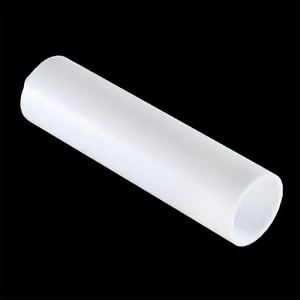In the world of 3D printing, maintaining your printer’s components is crucial for producing high-quality prints. One such component is the PTFE tube, an essential part of many 3D printers, including models like the Prusa MK3S, Ender 3, and Bambu Lab X1 Carbon. This guide will walk you through the process of removing a PTFE tube from a hotend, ensuring that your printer remains in top condition.

Polytetrafluoroethylene (PTFE) tubes are used in 3D printers to guide the filament from the extruder to the hotend. Their non-stick properties make them ideal for handling the high temperatures and pressures involved in the 3D printing process. However, over time, PTFE tubes can wear out, becoming clogged or damaged, which can affect print quality. Knowing how to remove and replace these tubes is an essential skill for any 3D printing enthusiast.
Tools Needed for the Job
Before starting, ensure you have the necessary tools on hand. You’ll need:
- A pair of pliers
- A wrench or spanner
- A sharp knife or PTFE tube cutter
- Replacement PTFE tube (if necessary)
Having these tools ready will make the process smoother and more efficient.
Step-by-Step Guide to Removing the PTFE Tube
Step 1: Power Down and Cool Off
First and foremost, ensure that your 3D printer is turned off and unplugged. Wait for the hotend to cool down completely to avoid burns or damage to the components.
Step 2: Access the Hotend
Remove any covers or panels that obstruct access to the hotend. This may require unscrewing some parts of your printer’s housing. Refer to your printer’s manual for specific instructions on accessing the hotend area.
Step 3: Release the PTFE Tube from the Extruder
Locate the PTFE tube connection at the extruder end. This connection typically involves a push-fit connector. To release it, press down on the collar of the connector while gently pulling the PTFE tube away from the extruder.
Step 4: Remove the PTFE Tube from the Hotend
Find the connection point of the PTFE tube at the hotend. This may also involve a push-fit connector or a threaded connection. Use your pliers or wrench to carefully unscrew or release the tube from the hotend. Be gentle to avoid damaging the connector.
Step 5: Inspect and Clean
Once removed, inspect the PTFE tube for any signs of wear, blockages, or damage. If the tube is dirty but otherwise intact, you may choose to clean it using a small brush or compressed air. If it’s damaged, replace it with a new one.
How to Cut and Install a New PTFE Tube
If you need to replace the PTFE tube, it’s crucial to cut it correctly and install it properly to ensure optimal printer performance.
Cutting the PTFE Tube
When cutting a new PTFE tube, ensure that the cut is clean and at a perfect 90-degree angle. This helps in achieving a snug fit and prevents leakage of filament. Use a sharp knife or a PTFE tube cutter for the best results.
Installing the New PTFE Tube
- Insert at the Hotend: Begin by inserting one end of the PTFE tube into the hotend connector. Ensure it is pushed all the way in for a secure fit.
- Connect to the Extruder: Guide the other end of the tube back to the extruder and connect it using the push-fit or threaded connector. Make sure both ends are tightly secured.
- Check for Proper Fit: Once installed, gently pull on the tube to ensure it’s securely connected and won’t come loose during printing.
Troubleshooting Common Issues
Can’t Remove the PTFE Tube
If you’re having trouble removing the PTFE tube, ensure that you are pressing down firmly on the connector collar while pulling the tube. If it’s stuck, check for any clips or locks that might need to be disengaged first.
PTFE Tube Doesn’t Fit Properly
If the new tube doesn’t fit properly, double-check the diameter and length of the tube against your printer’s specifications. Ensure that the tube is cut cleanly and is free from any deformations.
Additional Tips
- Regular Maintenance: Regularly inspect and clean the PTFE tube to prevent clogging and wear.
- Quality Materials: Always use high-quality PTFE tubes that match your printer’s specifications for the best results.
- Refer to Manuals: Consult your printer’s manual for specific instructions and diagrams related to your model.
Conclusión
Removing and replacing the PTFE tube is a straightforward process that can significantly impact the performance and lifespan of your 3D printer. By following these steps and using the right tools, you can maintain your printer’s efficiency and continue to produce high-quality prints. Whether you’re dealing with a Prusa MK3S, an Ender 3, or any other model, understanding this process is invaluable for any 3D printing enthusiast.
By mastering this simple maintenance task, you’ll ensure your 3D printer operates smoothly, helping you achieve the best possible results with every print. Happy printing!






